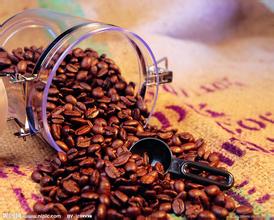What is the amount of coffee powder extracted from coffee?
Coffee extraction
Roughness is a good way to control bitterness, because the finer the grinding, the higher the extraction rate, the easier it is to extract high molecular weight bitter substances such as chlorogenic acid, quinic acid, caffeine and carbides. On the contrary, if the grinding is too rough, the lower the extraction rate is, the more difficult it is to extract the astringent bitter substance with high molecular weight, but the sweet taste with middle molecular weight may remain in the coffee grounds because of insufficient extraction, which is a waste. Therefore, baristas should pay attention to whether the thickness of the powder is normal every day. Too thick or too fine will cause abnormal extraction and affect the flavor of coffee.
The degree of grinding of all kinds of bubble cooking methods, from coarse to fine, in the following order:
French filter kettle (rough grinding), electric drip pot (medium), hand punch, siphon pot, desktop smart filter cup (medium), mocha pot (medium), espresso (fine), Turkish coffee (very fine).
According to the European Fine Coffee Association (SCAE-Speciality Coffee Association of Europe), the rough grinding of the French filter pot indicates that each bean is crushed into 100,300 particles, each about 0.7mm in diameter. In the medium rough grinding of the electric filter pot, each bean is ground into 500 grains of 800 particles, with a diameter of about 0.5 mm. Moderately ground by hand and siphon, each bean is ground into 1000 to 3000 particles with a diameter of about 0.35. The fine grinding of espresso in which each bean is ground into 3500 particles with a diameter of about 0.05mm. Turkish coffee is ground into a flour-like ultra-fine powder, and each bean is ground into 15000mm 35000 particles.
The thickness should be proportional to the extraction time.
Under normal circumstances, the fineness of coffee is inversely proportional to the extraction time and the extraction rate. It can be proved from hand brewing and espresso that the coarser the powder is, the smaller the extraction resistance is, the greater the flow rate is, the shorter the extraction time is, the lower the extraction rate is, and the lighter the taste is.
On the contrary, the finer the powder is ground, the greater the extraction resistance is, the smaller the flow rate is, and the longer the extraction time is, the higher the extraction rate is and the stronger the flavor is.
However, professional baristas will go against the trend and try to shorten the extraction time slightly when they encounter finer coffee powder, so as to avoid making bitter coffee with too high extraction rate. On the contrary, if you encounter coarser coffee powder, you will try to prolong the extraction time slightly, so as to avoid insufficient extraction and make insipid coffee.
In order to make delicious coffee, the fineness of grinding should be proportional to the extraction time, and it is more likely to produce a charming flavor spectrum.

Important Notice :
前街咖啡 FrontStreet Coffee has moved to new addredd:
FrontStreet Coffee Address: 315,Donghua East Road,GuangZhou
Tel:020 38364473
- Prev

An introduction to the differences in the description of coffee bean flavor in Asia, Africa and America
Coffee bean flavor description of Asia, Africa and America Central and South America is the largest coffee producing area in the world, where there are numerous boutique coffees. Take Colombia, Guatemala or Brazil as an example, good coffee is enough to make people dazzling. What is the resource advantage that makes Central and South America so good? French naval officer Gabriel Mathieu in 1721
- Next

Introduction to the brand of semi-automatic commercial coffee machine
The use of semi-automatic commercial coffee machine Brand introduction semi-automatic coffee machine, commonly known as the handle machine, is a traditional Italian coffee machine. This kind of machine grinds, presses, loads, brews and removes the residue manually according to manual operation. This kind of machines include small household machines with single faucets, large commercial machines with double faucets and three faucets, etc., and the newer machines are also equipped with electronic water control.
Related
- What brand of black coffee is the most authentic and delicious? what are the characteristics of the flavor of the authentic Rose Summer Black Coffee?
- Introduction to the principle and characteristics of the correct use of mocha pot A detailed course of mocha pot brewing coffee is described in five steps.
- Which is better, decaf or regular coffee? how is decaf made?
- How much is a bag of four cat coffee?
- How about four Cat Coffee or Nestle Coffee? why is it a cheap scam?
- Which is better, Yunnan four Cats Coffee or Nestle Coffee? How about cat coffee? is it a fake scam? why is it so cheap?
- How about Cat Coffee? what grade is a hoax? which instant coffee tastes better, four Cat Coffee, Nestle Coffee or G7 coffee?
- Process flow chart of coffee making-Starbucks coffee making process what coffee tastes good at Starbucks
- The top ten best coffee beans in the world Rose summer coffee or Tanzanian coffee tastes good
- Yunnan four cat coffee is good to drink?_four cat coffee is a big brand? four cat blue mountain coffee is fake?

